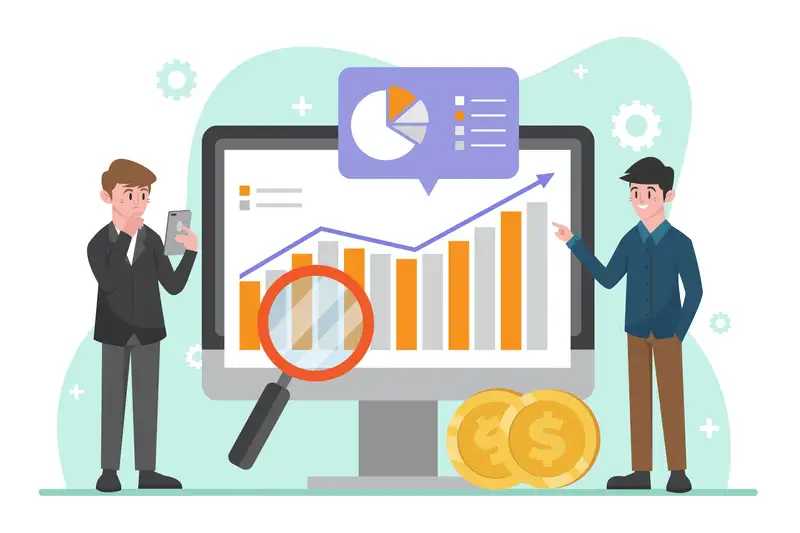
Demand Forecasting: How to Accurately Forecast Consumer Demand?
Understanding what your customers want—and when they want it—is essential to running a profitable business. That’s where demand forecasting comes in. By accurately predicting future customer demand, businesses can optimize inventory, streamline operations, and avoid lost sales or overstock.
In this guide, we’ll walk through what demand forecasting is, why it matters, and how you can implement accurate forecasting methods for your business.
What Is Demand Forecasting?
Demand forecasting is the process of estimating the future demand for a product or service based on historical data, market trends, and predictive analytics. It helps businesses make informed decisions about purchasing, production, staffing, and budgeting.
Demand forecasting answers questions like:
- How many units will customers buy next month?
- When does demand spike or drop?
- What factors influence seasonal or regional variations?
Forecasting allows businesses to align supply with expected demand—minimizing stockouts, excess inventory, and wasted resources.
Why Demand Forecasting Matters?
- Inventory Optimization: Prevents overstock and understock by predicting how much product is needed.
- Cash Flow Management: Avoids tying up cash in unsold goods.
- Better Supplier Planning: Lets you order the right quantity at the right time.
- Improved Customer Satisfaction: Ensures availability of high-demand items.
- Workforce Planning: Helps allocate staff based on expected sales cycles.
Types of Demand Forecasting
1. Qualitative Forecasting
Uses expert judgment, market research, or surveys. Ideal for:
- New product launches
- Markets with limited historical data
2. Quantitative Forecasting
Uses numerical data and statistical models. Ideal for:
- Established products with sales history
- Trend and seasonality analysis
Common models:
- Moving averages
- Exponential smoothing
- Linear regression
- Time-series analysis
Demand Forecasting Methods Explained
| Method | Use Case | Strengths | Weaknesses |
|---|---|---|---|
| Historical Sales Trend | Stable product sales over time | Easy to implement | Ignores external changes |
| Seasonal Index | Predicting recurring seasonal shifts | Highlights peak seasons | Requires multi-year data |
| Market Research | New markets or launches | Customer insights | Expensive and subjective |
| Regression Analysis | Forecasting based on variables | Data-driven, flexible | Complex setup |
| Machine Learning Models | Large-scale, multi-SKU forecasting | High accuracy, adapts to trends | Requires tech infrastructure |
How to Build a Demand Forecasting Process?
Flat Rate shipping is ideal when:
- Gather historical data (sales, returns, promotions)
- Clean and structure the data for accuracy
- Choose your forecasting model (based on data volume and complexity)
- Run test forecasts and compare with actuals
- Refine your model using error metrics like MAPE or RMSE
- Integrate the forecast into purchasing, staffing, and planning tools
- Update forecasts regularly (weekly, monthly, or real-time)
Pro Tip: Combine multiple forecasting methods for more accuracy (hybrid forecasting).
Tools for Demand Forecasting
- Excel/Google Sheets: Manual forecasting for small businesses
- QuickBooks Commerce: Sales analytics with basic demand insights
- Zoho Inventory: Built-in forecast reports
- NetSuite: Advanced forecasting + inventory optimization
- Forecast Pro, Lokad, GMDH Streamline: Enterprise-level solutions
- AI-based Tools: Like SAS Forecasting or AWS Forecast for high-volume forecasting
Common Forecasting Mistakes (and How to Avoid Them)
- Relying on outdated data: Always use the most recent data available
- Ignoring external factors: Economic shifts, weather, and competitor moves can alter demand
- Overcomplicating models: Start simple, then layer in complexity
- No forecast validation: Always compare predictions with actuals
- Forecasting in silos: Align marketing, sales, and supply chain teams
Measuring Forecast Accuracy
Use these metrics to track performance:
- MAPE (Mean Absolute Percentage Error)
- RMSE (Root Mean Squared Error)
- Forecast Bias
- Tracking Signal
Regularly reviewing these KPIs ensures your forecasting remains aligned with real-world outcomes.
Benefits of Accurate Demand Forecasting
- Reduces excess inventory and holding costs
- Improves delivery timelines and reduces lead times
- Aligns supply chain and production with actual demand
- Supports smarter budgeting and strategic planning
- Enables faster response to demand fluctuations
Frequently Asked Questions
Forecasting is the prediction; planning is what you do with the forecast.
It depends on your sales volume and volatility. Monthly or weekly updates are common.
Absolutely. Even basic forecasts can help avoid costly stockouts or overordering.
Not always. You can start with spreadsheets and move to tools as your complexity grows.
Start Forecasting Smarter with Willow Commerce
With Willow Commerce, you can connect sales, inventory, and order data into a single dashboard—and leverage demand forecasting to drive better decisions.
- Predict demand across SKUs and channels
- Integrate with Shopify, Amazon, and WooCommerce
- Reduce inventory waste and improve cash flow
- Visualize trends and adjust in real time
» Book Your Free Demo Today


